
9 minute read
Nesting Instinct

Flagstone hallway in Elle and Martin's Cotswolds self-build.
Cate Hamilton
Interview and pictures by Cate Hamilton.
Advertisement
Like many pregnant mothers, I got hit by the nesting instinct at seven months and couldn't stop redecorating, cleaning and tidying my house ready for my baby's arrival. Elle Kemp, half of husband-and-wife interiors and renovation duo Ridge and Furrow, took her nesting to extremes when she and her husband Martin Gane bought an uninhabitable pig shed whilst Elle was pregnant with their first son, Claude.
Elle, I've been a big fan of you guys on Instagram for a few years. How is it that you and Martin have come to live in such a gorgeous property nestled in the Cotswolds?
Ever since we met, Martin and I have both had aspirations to build or at least take on major renovations. We were coming up with a few issues trying to buy land that can be built on because it is a) difficult to find, b) in high demand, and c) expensive. We had a very limited budget. We had reached a point where we had to make a drastic decision. My husband is a New Zealander and over there building your own house is quite a straightforward proposition. It is done regularly throughout the country, there's plenty of available land, the planning restrictions aren't too onerous, and the building industry is set up to serve self-builds. It seemed like if we were going to build our own house, we would have to move.
Martin is an inveterate researcher. He will plug away hour after hour looking for just the right thing, whether it be reading every toaster review, spending hours on eBay to find the right reclaimed sink, or searching fruitlessly day in day out on property websites (UK and NZ). I'd stopped looking at property locally as I'd given up hope and moved my horizons to the other side of the world, focusing on financial exchange fluctuations to see what we could muster to spend over there. Then one day it was just there, in the window of the nearest estate agent, just over the road. It was not love at first sight. Ours is not one of those barn conversions that you might typically imagine: no great theatrical open spaces of soaring scale, no grand cruck timber frames sweeping to the ceiling. Its delights would take longer to appreciate.
What state was the property in when you bought it?
The barn had had its roof recently redone (with the original terracotta pantiles) and the floors had been dug out down to the mud. The interior brick walls were damaged from many alterations that had been made over the years of farming. Lots of the stone walls had been eaten away by years of animal urine.
Gosh. How did you even begin to plan the renovation? Where did you start?
There were plans in place already that had been drawn up to get planning permission. These plans compromised the original building and would have ended up with a building that felt like a new build. We knew we wanted to retain the character of the old building so we redesigned the plans over a course of months while we were adjusting to life with a newborn – lots of days in bed feeding a baby under a pile of design work. I used all my hours of feeding and holding a sleeping baby (he'd only sleep in my arms) to scroll through Pinterest collecting images which inspired but also helped to communicate to each other the ideas we were developing. Having lived together for years we already knew each other's tastes and luckily shared a love of traditional and reclaimed materials.
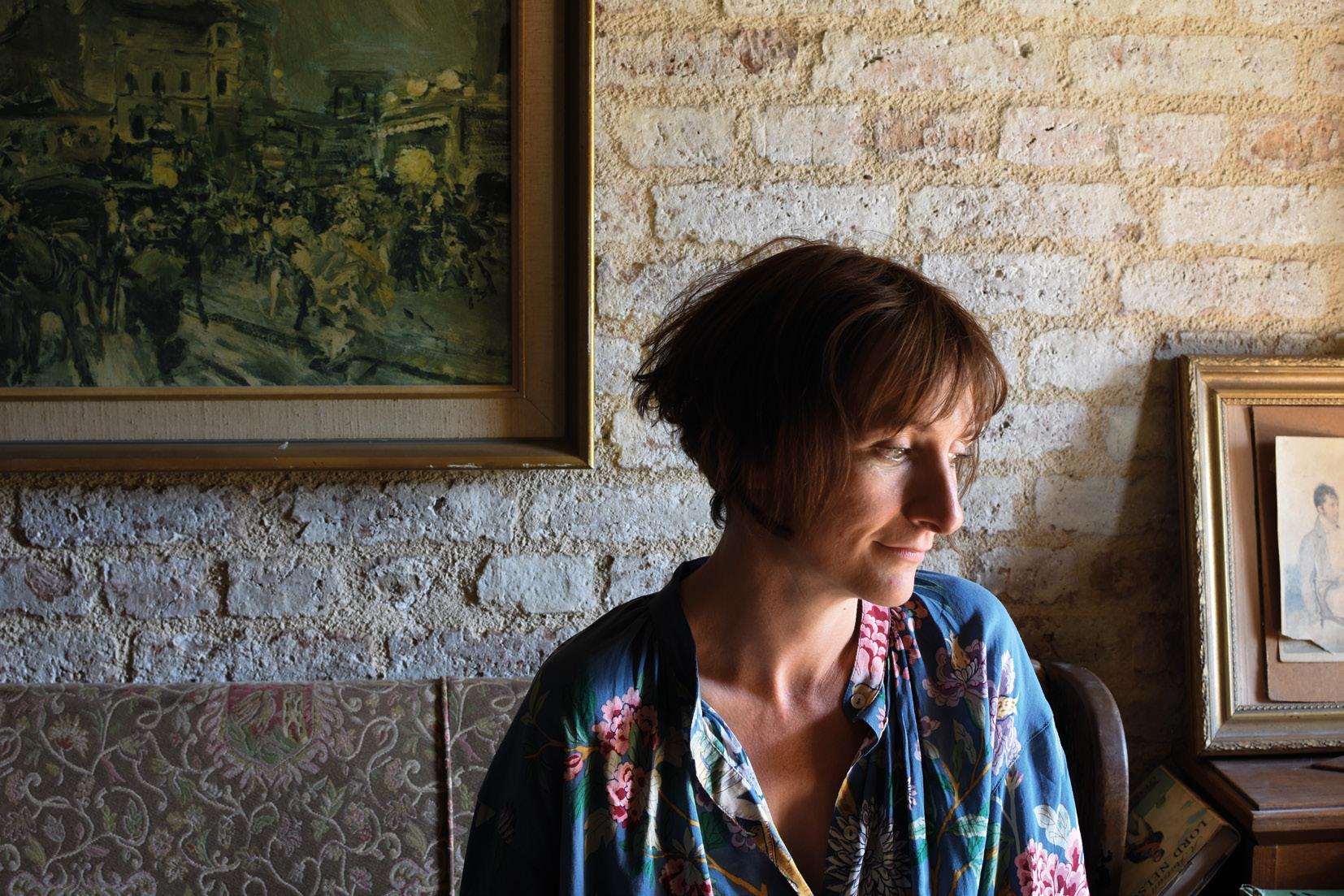
Elle Kemp, interior designer and client on her family's self-build journey.
As a husband-and-wife team, how do you organise yourselves on such a huge project?
As I've been busy with two babies through the course of the build I haven't had the opportunity to be as hands-on as I'd like. I had aspirations to learn some of the trades we'd require like tiling and plastering, but reality meant that my roles became lead designer, client, and babysitter. Martin had a bit of experience in building stuff but nothing like this – he'd done quite a bit of carpentry and worked as a garden designer and landscaper. The key skills he had were a can-do attitude, a keen eye for detail and precision, and the patience to research how to do stuff that he didn't already know.
You were heavily pregnant or in the early days of new parenthood, and Martin was at the building site most days building your dream house. How did you keep yourself going through that first winter?
I was seven months pregnant when we bought the place in October 2012. The first winter I was caught up with developing the design. While we were waiting for planning permission changes to come through we sorted out the garden somewhat so that if I came to site there was somewhere that I could spend time with Claude. As the design work became less I began to be frustrated that there was little I could do. I embraced the garden being my domain for the time being and by the end of the first summer I had grown prize-winning giant onions and beans in our raised beds and felt that I was beginning to thrive in village life.
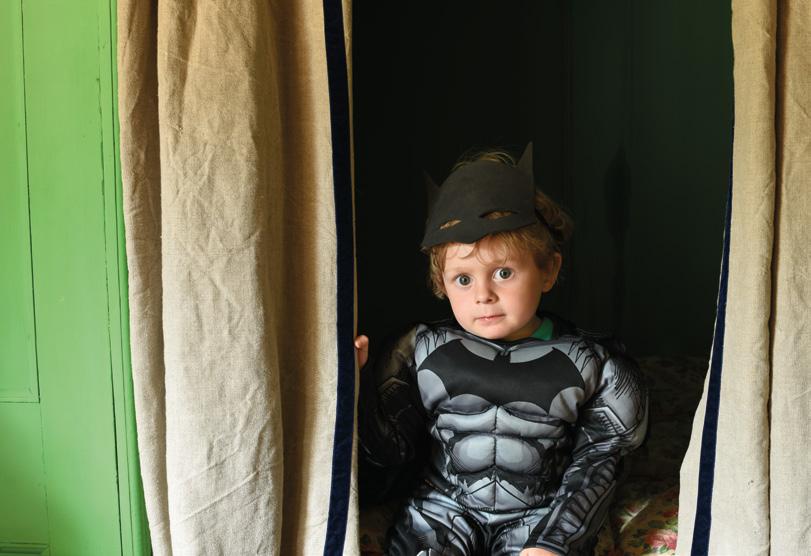
Box beds were the elegant solution for the boys needing to share a bedroom.
Looking at some of these pictures, it is hard to tell that you now have two very young boys at home. How do you balance the practical needs of a family with having such a stylish interior? Is it toddler-friendly?
As we designed we made sure we built in plenty of storage space. We'd seen from friends with kids how their stuff multiplies and can subsume a house and we were both keen not to lose our home to the deluge. When we moved in we had a huge cull of our own things and it was refreshing to be less encumbered by belongings so we've held the same attitude to kids' stuff. Every now and then we ask the boys to pass on things they no longer play with to charity so that we don't get overrun, and they learn to think about others who are less fortunate. A lot of their toys are bought second hand – jigsaws and board games meld with our house quite well as they're mostly vintage too. And all the pieces of furniture around the house hold their fair share of the boys' stuff.
One of my favourite parts of your house is the beds that Martin has built for the boys. Where did you get that idea from? How do you find your inspiration?
I don’t know where we first came across box beds but Martin and I have always loved them. Unfortunately they're exceedingly impractical for double beds unless clambering is your thing. We knew the boys would always have to share their bedroom as the house only has two, so once we hit on the idea of box beds it seemed ideal as it would mean they would have their own private spaces. We could also make the most of the available space by building in storage underneath and around them.
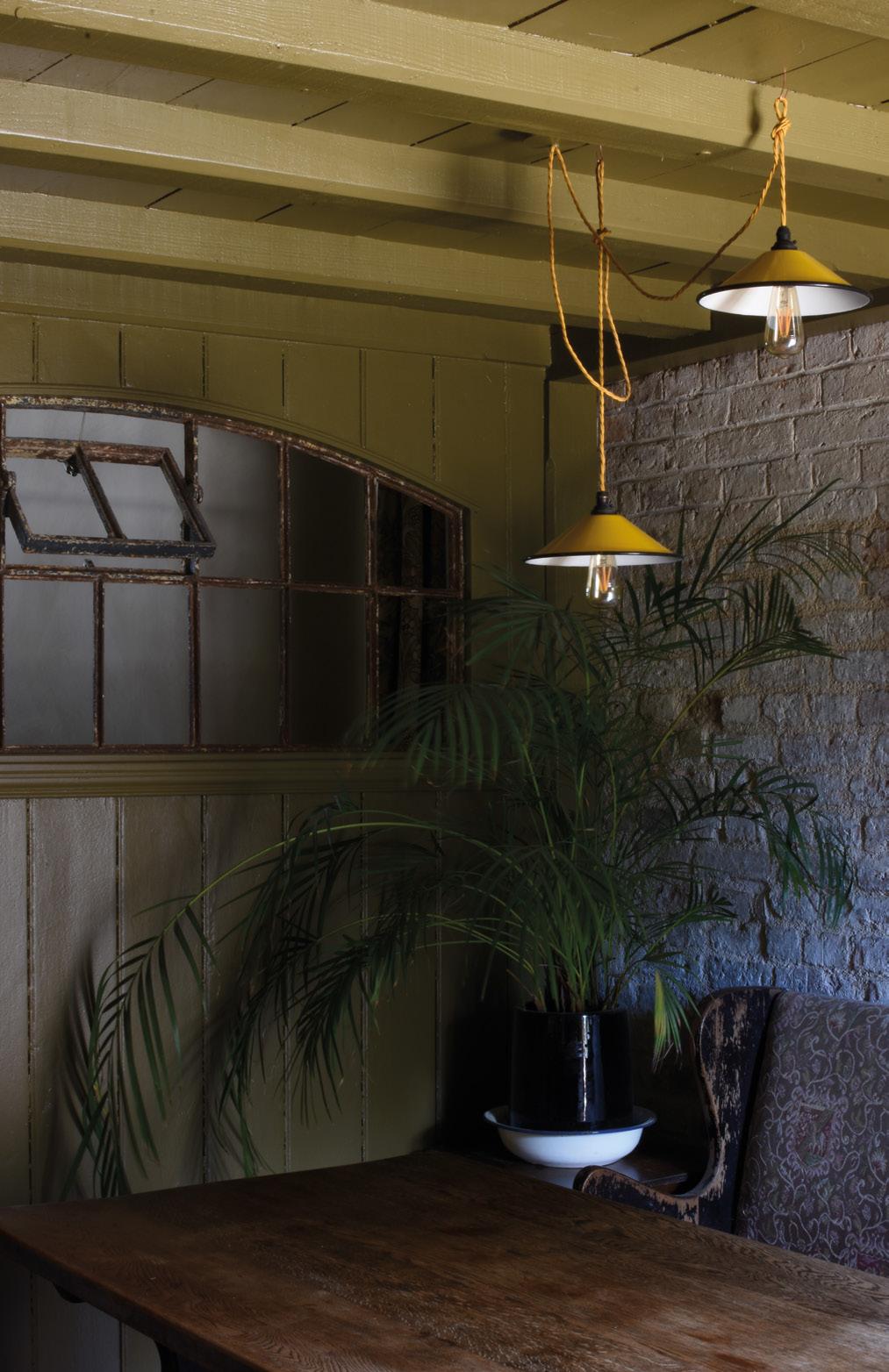
Dining room, complete with original pigsty railings.
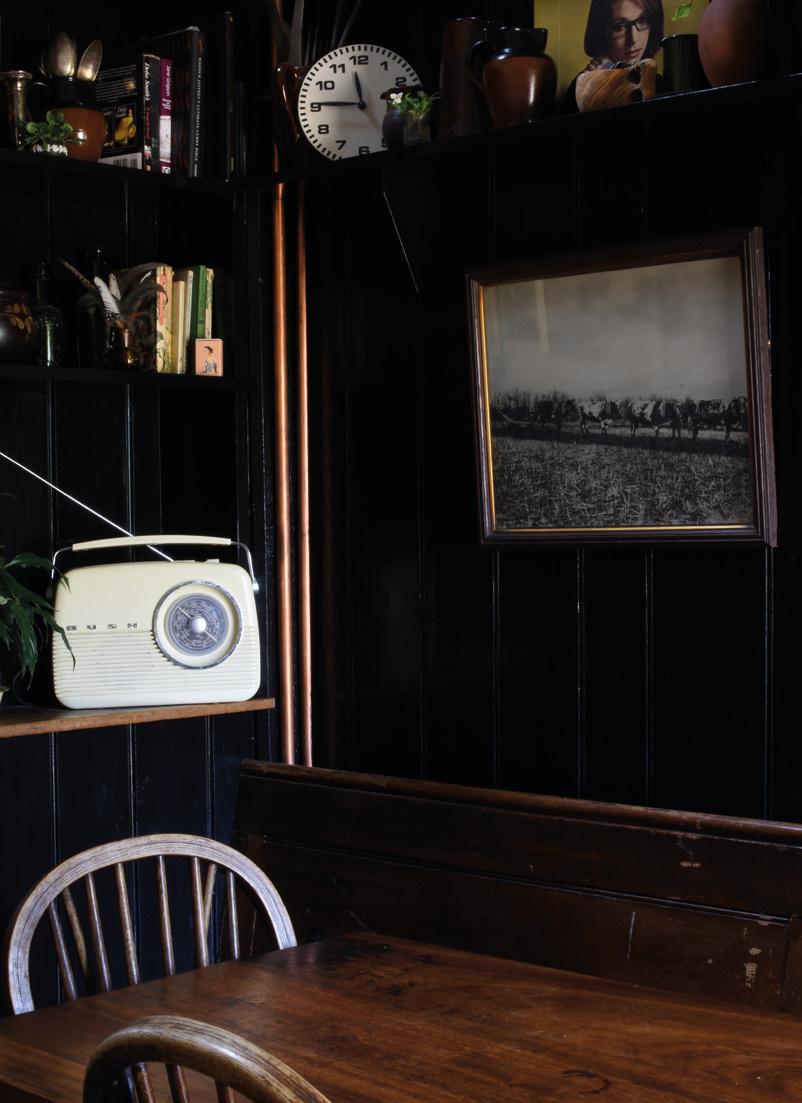
The kitchen table, centre of this family home in the Cotswolds.
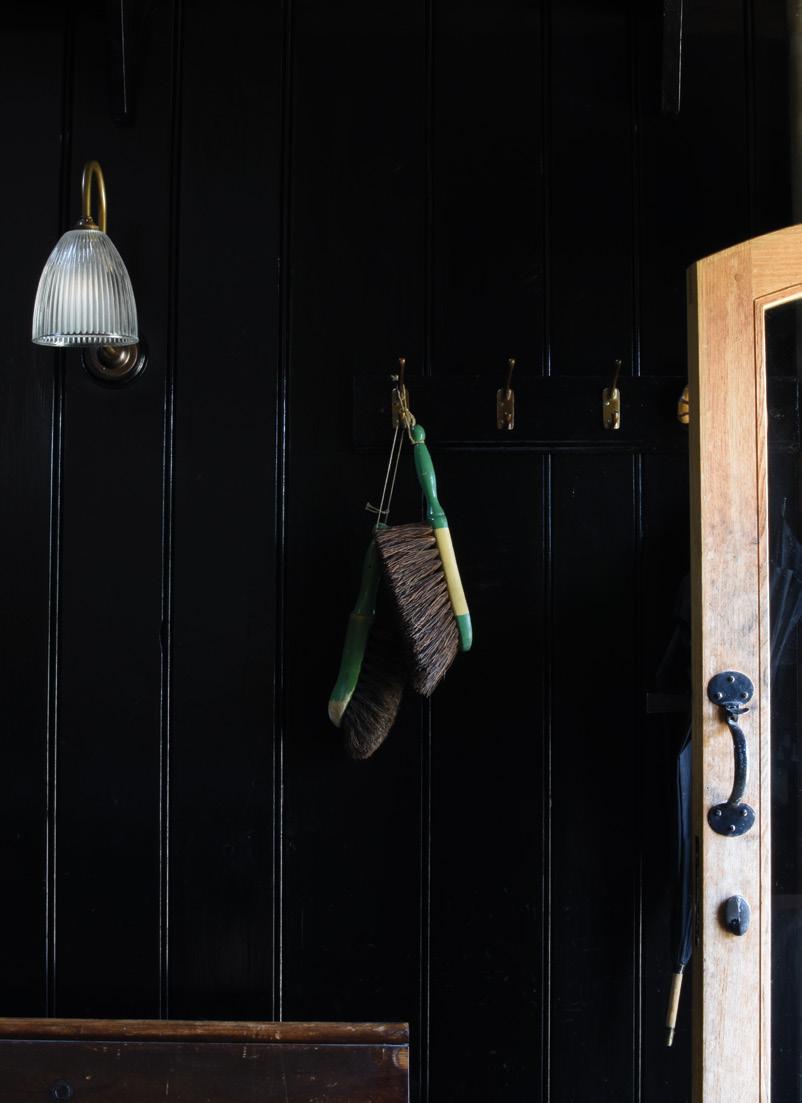
Dark wood panelling in the kitchen makes it look as though it has been here forever.
Now that the kitchen's complete (two years after we moved in) it has to be our favourite space. It draws together so many of the things we love: the black gloss beadboard is inspired by one of our favourite pubs, the Woolpack in Slad, and the cabinets are made from mismatched pieces that we've altered and detailed to all work together. Then there's a limestone sink that adds the air of a scullery or outhouse to the place. Our style is kind of a mix of servants' quarters and old pubs – all unfussy diminutive rooms in vintage tones and utilitarian furnishings.
You have such an eye for seeing potential in re-found objects. Which object has undergone the most radical transformation in your house?
The limestone sink is the most worthy of note. It had been used as a garden trough so we had to sand the lichen off before we fitted it. We suspect it was once used for meat preparation as there appear to be cleaver marks in the base and it's charmingly worn down along the front edge from earlier use, a bit like the kind of bow that appears in old stone stairs over years of footfall.
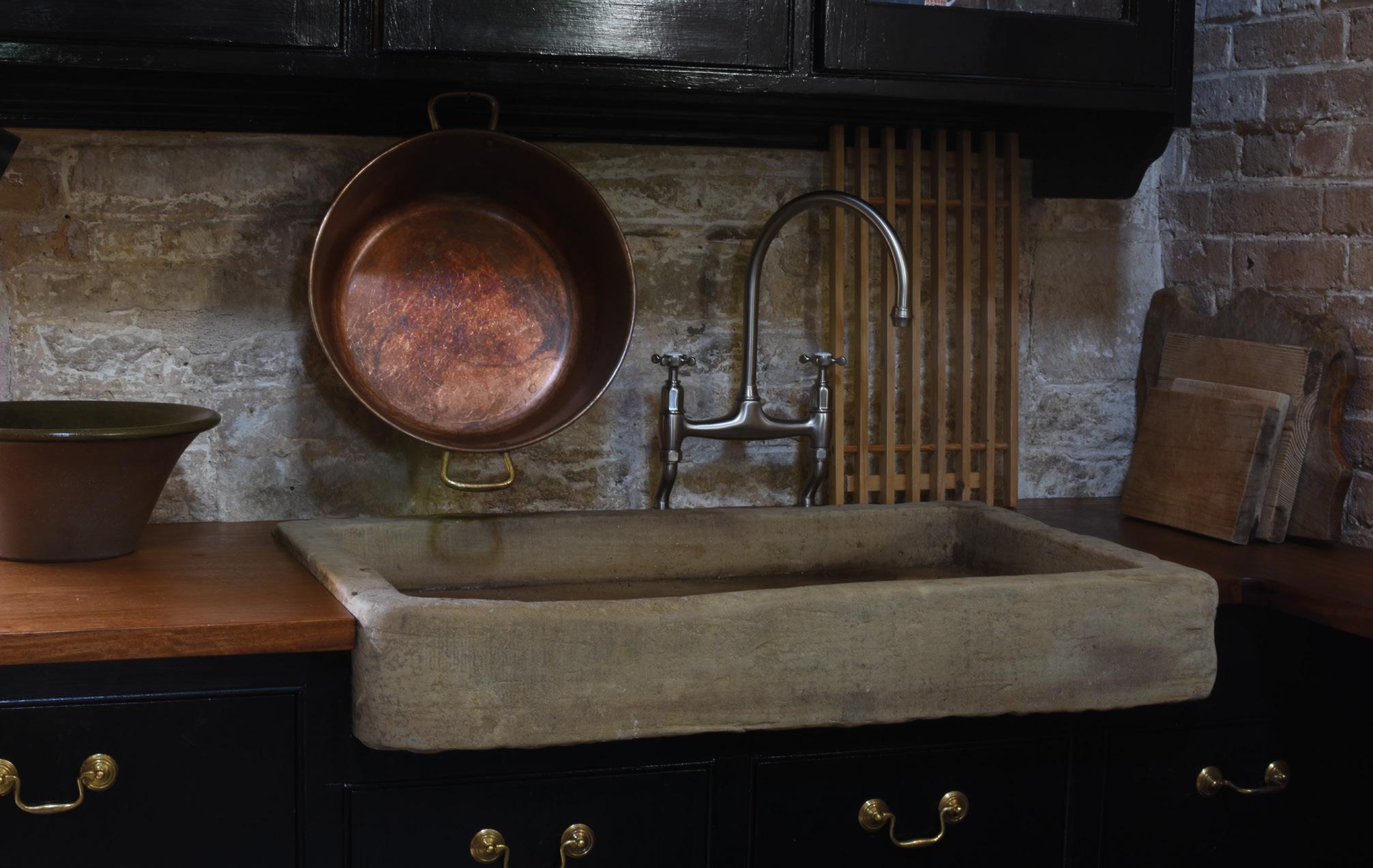
Martin found this stone trough in a garden, and adapted it for kitchen life.
What are your top three tips for families looking to nest with their new babies?
1) Their things don't need to lead your style choices and they don't need half the stuff you're told they need anyway. Children don't need to be surrounded by primary colours to be stimulated: the world is all new to them, and everything is interesting.
2) Build in a good quantity of high shelves where precious things and dangerous things can be kept out of reach.
3) Try not to be precious about belongings – most of our vintage treasures are for daily use and my boys understand that things need to be treated with care, but that accidents do happen and it's only stuff after all.
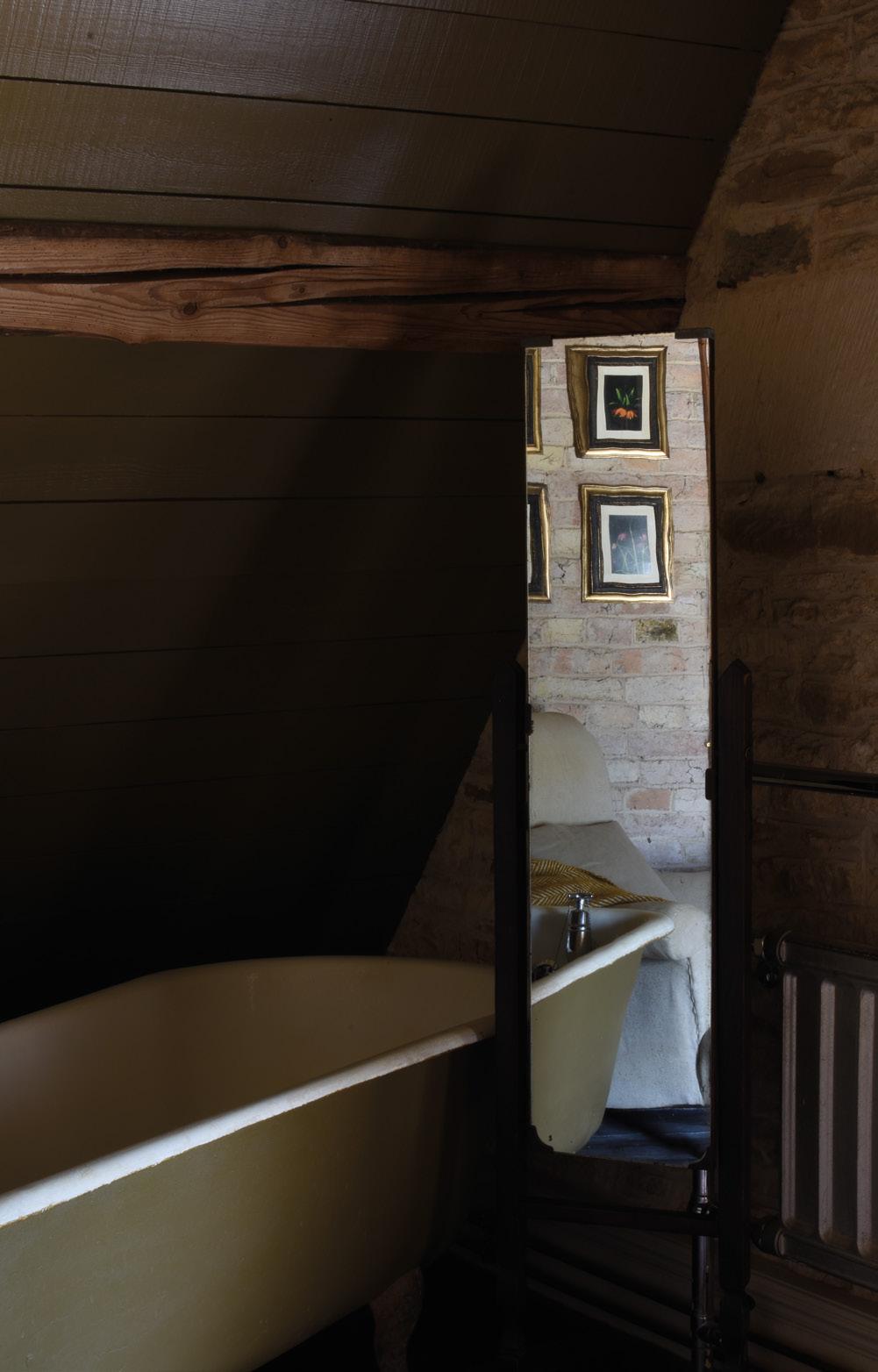
The en-suite bathroom is gloriously dark and restful.
What's next for you now that your house is (almost) finished? Will it ever be finished?
This is a living project and as such it'll continue evolving forever. However, the main construction of the house is complete now. The day after Martin finished the kitchen he hired in a digger to start over on our garden. Our children will spend their whole early childhood on a building site and they love it! I only worry that they'll be bereft when it's finally finished and there's no scaffolding to play on and no piles of rubble or sand to climb through!
Martin's been so inspired by building his own workshop that he's begun building bespoke garden buildings for other people. We design them together, then he gets stuck into building them and sometimes landscaping them too, then I style them. We do outbuildings the same way we've done our home, working with natural and reclaimed materials to produce spaces that feel grounded, like they've always been there.
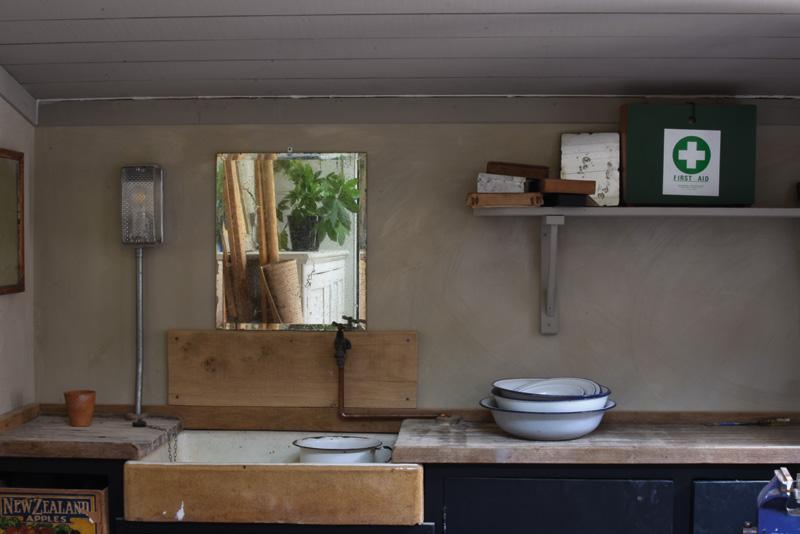
The garden shed interior.
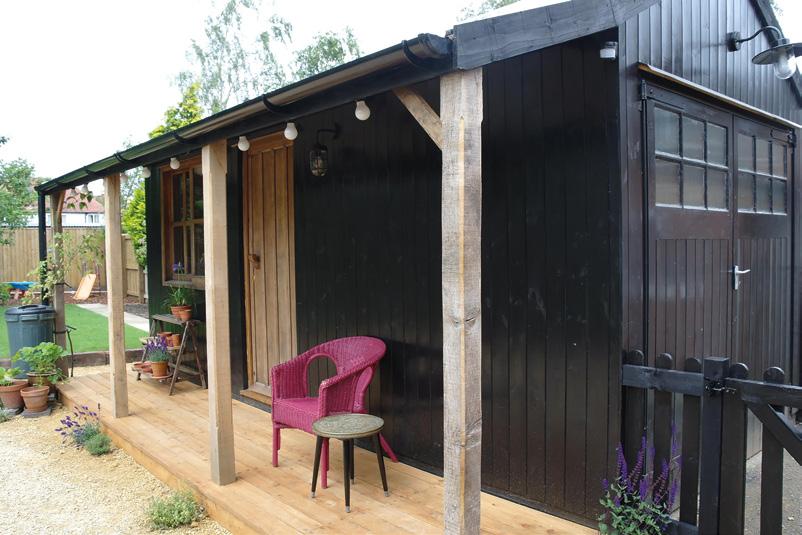
Bespoke garden shed that Martin created for a local writer.
It's been a pleasure spending time in your incredible house, Elle. If my shed were half as beautiful, I would spend the whole day in there! How can we contact you to discuss designing a bespoke project of our own?
Follow @ridgeandfurrow on Instagram or visit www.ridgeandfurrow.co.uk for more inspiration and further details.




